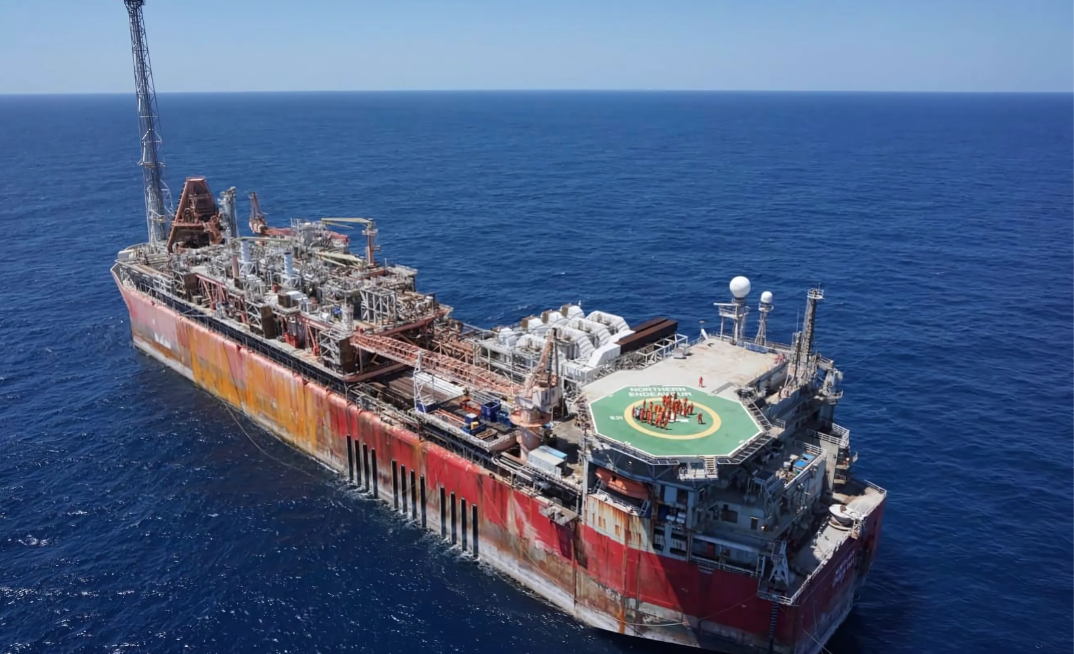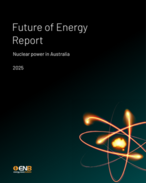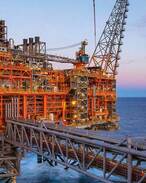The week in review

As previewed in last Friday's newsletter, the great and the good in the world of decommissioning came to Perth this week to attend the D&A 2025, billed as Australia's biggest decommissioning and abandonment conference.
ENB were at the event from beginning to end and attended a large number of the presentations on all manner of different issues from a wide range of speakers.
One of the most interesting was delivered by Shane McWhinney, the general manager of the Northern Endeavour branch at the Department of Industry, Science and Regulation (DISR), the team charged with overseeing and managing the decommissioning of the formerly operational floating production, storage and offloading (FPSO) vessel.
And it struck me that the story of the Northern Endeavour shows all that's both good and less good about the oil and gas industry.
The 274m long Northern Endeavour, currently floating between the Laminaria and Corallina oil fields, about 550 km northwest of Darwin in the Timor Sea, was built to process the oil discovered in those fields by the Northern Territory Exploration Permit AC/P8 - a joint venture between Woodside Energy (operator – 50%), BHP (25%) and Shell (25%).
The JV commissioned the vessel in the mid 1990s and it was constructed by Samsung Heavy Industries and fitted out by the FPSO consortium Kvaerner-SBM.
Many, many jobs will have been created and sustained during that process, creating the wealth and prosperity and all the knock on effects of a thriving construction project. Likewise the design, procurement, construction and installation of the subsea facilities was contracted to a joint venture between Coflexip Stena Offshore and JP Kenny in October 1996. Again - more wages, more jobs, more prosperity.
Once all that was done, production started in November 1999, from three production wells on Laminaria and two on Corallina.
And those fields were extremely productive - so much so that in 2002, two additional infill wells were drilled for Laminaria and tied back to the FPSO, with a sidetrack well added in 2009. The Northern Endeavour was at the heart of two thriving oil fields and by 2017 had produced more than 205 million barrels of oil.
By anyone's book that is a lot of oil and was a tremendous asset to the JV and will have had substantial flow on effects to their customers near and far.
In the first dozen or so years of the new millennium, the make up of the JV went through a number of iterations as is not uncommon, first with BP selling their stake to Paladin Resources, then Shell leaving and then Paladin being taken over by Talisman Energy. During this period, while production figures were certainly down, the fields were still productive.
However, in 2015 Woodside - who still co-owned the vessel with Talisman - decided to decommission the Northern Endeavour and started to look for a new owner. And later that year Woodside and Talisman agreed to sell the FPSO to Northern Oil & Gas Australia (NOGA), a newly formed company with Angus Karoll as its sole director, which would also take control of Talisman, with Woodside leaving the picture officially in late 2016.
NOGA, who had previously rebranded Talisman Energy to Timor Sea Oil & Gas Australia (TSOGA), contracted maintenance and operation of the facility to Upstream Production Solutions (UPS) with UPS becoming the safety case holder for the facility following acceptance by the regulator.
And this is where the less good comes in.
In July 2019 NOPSEMA issued a prohibition Notice to UPS and the following year issued a general Direction to TSOGA ordering the immediate cessation of production on the Northern Endeavour, in the face of a number of issues which had been identified relating to corrosion and safety systems.
NOGA for its part was not able to fund the work needed to meet NOPSEMA's demands and went into voluntary administration in September 2019 with administrators KPMG recommending NOGA be liquidated.
And the vessel - once a tussle with one of NOGA's former creditors had been overcome - then passed into the hands of the Australian government.
The handling of the end of the Northern Endeavour's working life has been the subject of masses of column inches and conjecture since then but what's clear is that the taxpayer was left potentially footing the multi-million dollar bill for the decommissioning of what was once a prized production asset.
However, here comes the good again.
The government stepped up to the plate and worked to ensure the taxpayer wasn't hit. By instituting a levy on the O&G industry - albeit a pretty unpopular one - the government secured the funds to cover all costs of the decommissioning and also sent a strong message to industry that the situation that had occurred with the vessel would not be tolerated.
Since then, the government has contracted Petrofac to oversee the (unscrewing of the) nuts and bolts of the Northern Endeavour's decommissioning and - as McWhinney explained on Wednesday - the process is advancing well with the securing chains set to be severed in the next few months.
Once that happens the vessel will be towed to Singapore where it will have some initial remediation work and then taken to a specialist, as-yet unannounced location for its final decommissioning by an also as-yet unnamed project partner.
This work - the relatively unglamourous end of the oil and gas production story - when a vessel is taken apart and recycled, will also create masses of jobs, huge investment and as the conference in Perth showed this week, is a rapidly growing and important sector for the industry.
And there's more good out of this story too.
While an army of workers will be working above the surface, taking apart the Northern Endeavour, a similarly skilled team of workers will be under the surface looking to remediate the seabed. And with nine subsea wells, seven subsea Christmas trees, 50km of flowlines, 20km of umbilicals, three subsea manifold structures, nine sets of mooring chains in three groups and nine suction pile anchors that's no small task.
The lifespan of an O&G production project is often long and tortuous, with many ups and downs, as can be seen through the Northern Endeavour's tale. But with the right people in place, much can be achieved all along that journey.
Yours,
Russell Yeo
Editor
Energy News Bulletin
To get the best analysis and insight of what's happening in APAC's energy sector, sign up for a free trial.























